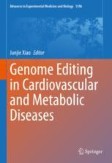Search
Search Results
-
Methodological considerations on near-infrared spectroscopy derived muscle oxidative capacity
PurposeDifferent strategies for near-infrared spectroscopy (NIRS)-derived muscle oxidative capacity assessment have been reported. This study...

-
The Effect of Glycine and N-Acetylcysteine on Oxidative Stress in the Spinal Cord and Skeletal Muscle After Spinal Cord Injury
Oxidative stress is a frequently occurring pathophysiological feature of spinal cord injury (SCI) and can result in secondary injury to the spinal...

-
Microbiota influences host exercise capacity via modulation of skeletal muscle glucose metabolism in mice
The microbiota enhances exercise performance and regulates host physiology and energy metabolism by producing beneficial metabolites via bacterial...

-
Endurance training-induced increase in muscle oxidative capacity without loss of muscle mass in younger and older resistance-trained men
While concurrent training is regularly used in older populations, the inverse relationship between fibre size and oxidative capacity suggests that...

-
Autophagy in Muscle Stem Cells
Muscle stem cellsMuscle stem cell, also known as satellite cellsSatellite cell, are responsible for the regenerative capacity of adult muscle tissue...
-
LED therapy plus idebenone treatment targeting calcium and mitochondrial signaling pathways in dystrophic muscle cells
Intracellular calcium dysregulation, oxidative stress, and mitochondrial dysfunction are some of the main pathway contributors towards disease...

-
Effect of muscle fibre types and carnosine levels on the expression of carnosine-related genes in pig skeletal muscle
It is generally accepted that carnosine (β-alanyl- l -histidine) content is higher in glycolytic than in oxidative muscle fibres, but the underlying...

-
Effects of resistance training on heat shock response (HSR), HSP70 expression, oxidative stress, inflammation, and metabolism in middle-aged people
Resistance training (RT) can increase the heat shock response (HSR) in the elderly. As middle-aged subjects already suffer physiological declines...

-
Effect of hypobaric hypoxia on the fiber type transition of skeletal muscle: a synergistic therapy of exercise preconditioning with a nanocurcumin formulation
Hypobaric hypoxia (HH) leads to various adverse effects on skeletal muscles, including atrophy and reduced oxidative work capacity. However, the...

-
Molecular Interplay of Oxidative Stress and Gut Microbiome in Aging
Oxidative stress results from an imbalance between reactive oxygen species production and the capacity of the organism to counteract them. These...
-
Neutrophil–lymphocyte Ratio and C-Reactive Protein Levels are not Associated with Strength, Muscle Mass, and Functional Capacity in Kidney Transplant Patients
Chronic inflammation has been associated with components of sarcopenia; however, these associations are unknown in kidney transplant patients (KTPs)....

-
Dexmedetomidine alleviates inflammatory response and oxidative stress injury of vascular smooth muscle cell via α2AR/GSK-3β/MKP-1/NRF2 axis in intracranial aneurysm
Vascular smooth muscle cell (VSMC) phenotypic modulation regulates the initiation and progression of intracranial aneurysm (IA). Dexmedetomidine...

-
Genome Editing to Abrogate Muscle Atrophy
Muscle atrophy is a multifactor syndrome, which not only decreases the patients’ quality of life significantly but also increases the morbidity and...
-
The Effect of Training on Skeletal Muscle and Exercise Metabolism
This chapter reviews the molecular and metabolic responses in human skeletal muscle to exercise training. Acute changes in various stimuli that...
-
Magnetic Resonance Quantification of Muscle Phosphocreatine Resynthesis Kinetics During Exercise Recovery: An In Vivo Measure of Mitochondrial Function in Humans
Quantifying muscle phosphocreatine (PCr) resynthesis kinetics during recovery from exercise can be employed as a sensitive and noninvasive in vivo...
-
Mitochondrial/Oxidative Stress Biomarkers in Huntington’s Disease
Huntington’s disease (HD) is a hereditary neurodegeneration caused by a mutation in the HTT gene, leading to mutated huntingtin protein aggregation....
-
Oxidative Stress in Genitourinary Cancer
Oxidative stress is caused by reactive oxygen species (ROS) and reactive nitrogen species (RNS), and affects various cellular functions in both...
-
Topical application of a TRPA1 antagonist reduced nociception and inflammation in a model of traumatic muscle injury in rats
Musculoskeletal pain is a widely experienced public healthcare issue, especially after traumatic muscle injury. Besides, it is a common cause of...

-
Lactate ameliorates palmitate-induced impairment of differentiative capacity in C2C12 cells through the activation of voltage-gated calcium channels
Palmitic acid (PA), a saturated fatty acid enriched in high-fat diet, has been implicated in the development of skeletal muscle regeneration...

-
Mitochondrial dysfunction: roles in skeletal muscle atrophy
Mitochondria play important roles in maintaining cellular homeostasis and skeletal muscle health, and damage to mitochondria can lead to a series of...

